Inside the ‘Beautiful Creatures’ Diamond Jewelry Exhibit at New York’s American Museum of Natural History
Curator Marion Fasel shares the back stories on the dazzling jewels in the “Beautiful Creatures” exhibit at New York’s American Museum of Natural History.
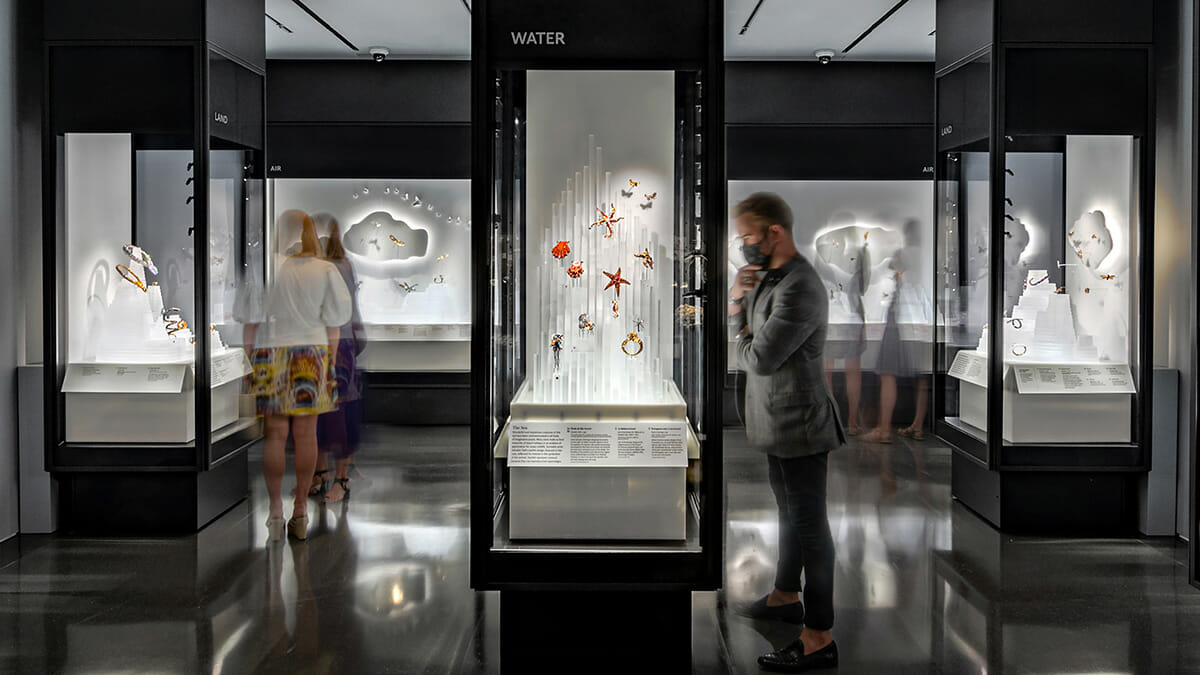
Lions, snakes and butterflies, cicadas, crocodiles and jellyfish: so many creatures in the animal kingdom have been depicted in jewelry throughout the world for centuries. For the exhibition I curated at the American Museum of Natural History in New York, Beautiful Creatures: Jewelry Inspired by the Animal Kingdom, I narrowed the focus of the theme to gem-set jewelry made over the last 150 years.
The exhibit, which will be on display from June 12 through September 19, 2021, was conceived as a tribute to the museum’s 150th anniversary and a companion piece to the permanent newly renovated Mignone Halls of Gems and Minerals. All the animals in the exhibit can be found in other places in the museum’s displays and famous dioramas; they’re all fierce, stylish or romantic. There is nothing cutesy. They are creatures of the wild.
The American Museum of Natural History’s Beautiful Creatures exhibit is where diamonds meet the animal world.
Diamonds either accent or completely cover many of the 104 jewels in the Creatures exhibition. Read on for six pieces that show dazzling ways diamonds have been used in animal jewelry over the years, plus some of the fascinating stories about the women who wore them.
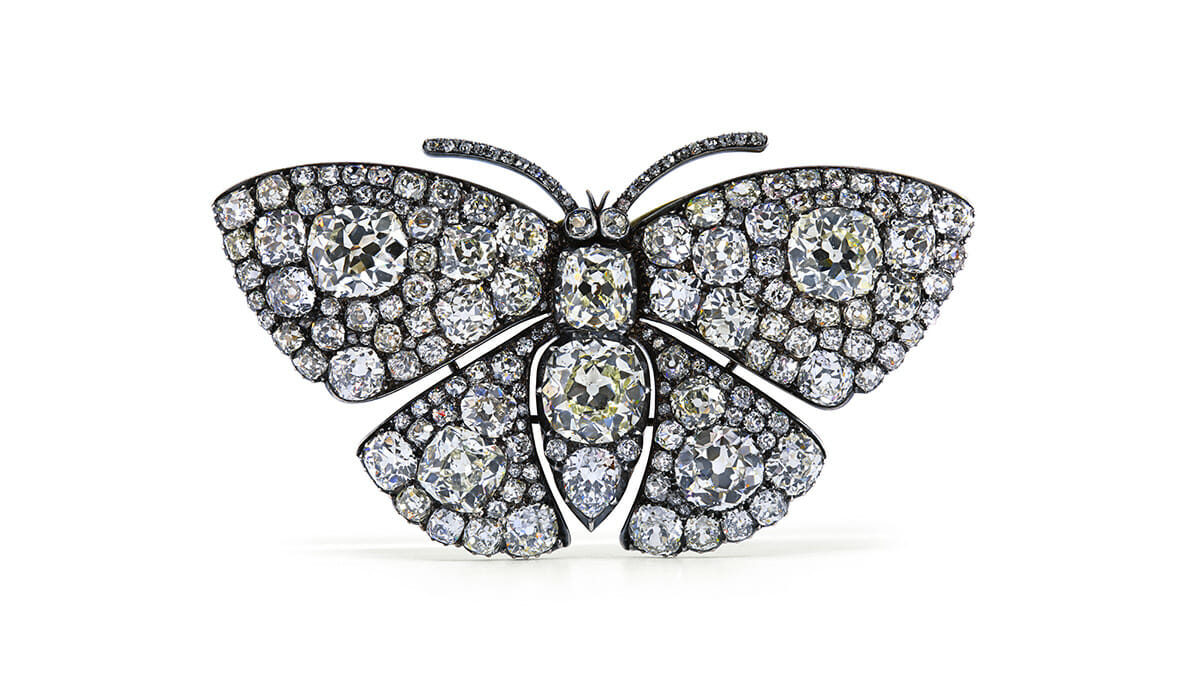
Diamond Butterfly Brooch, ca. 1875
In the late 19th century, the craze for butterfly collecting sparked a trend for butterfly jewels. This brooch, which is one of the oldest pieces in the exhibition, is composed of approximately 75 carats of substantially sized diamonds.
While the monochromatic composition might seem at odds with the bright colors and patterns for which butterflies are beloved, the gems reflect the fact that all-diamond jewelry became the mode for formal jewels after the 1871 opening of the Kimberley Mine in South Africa.
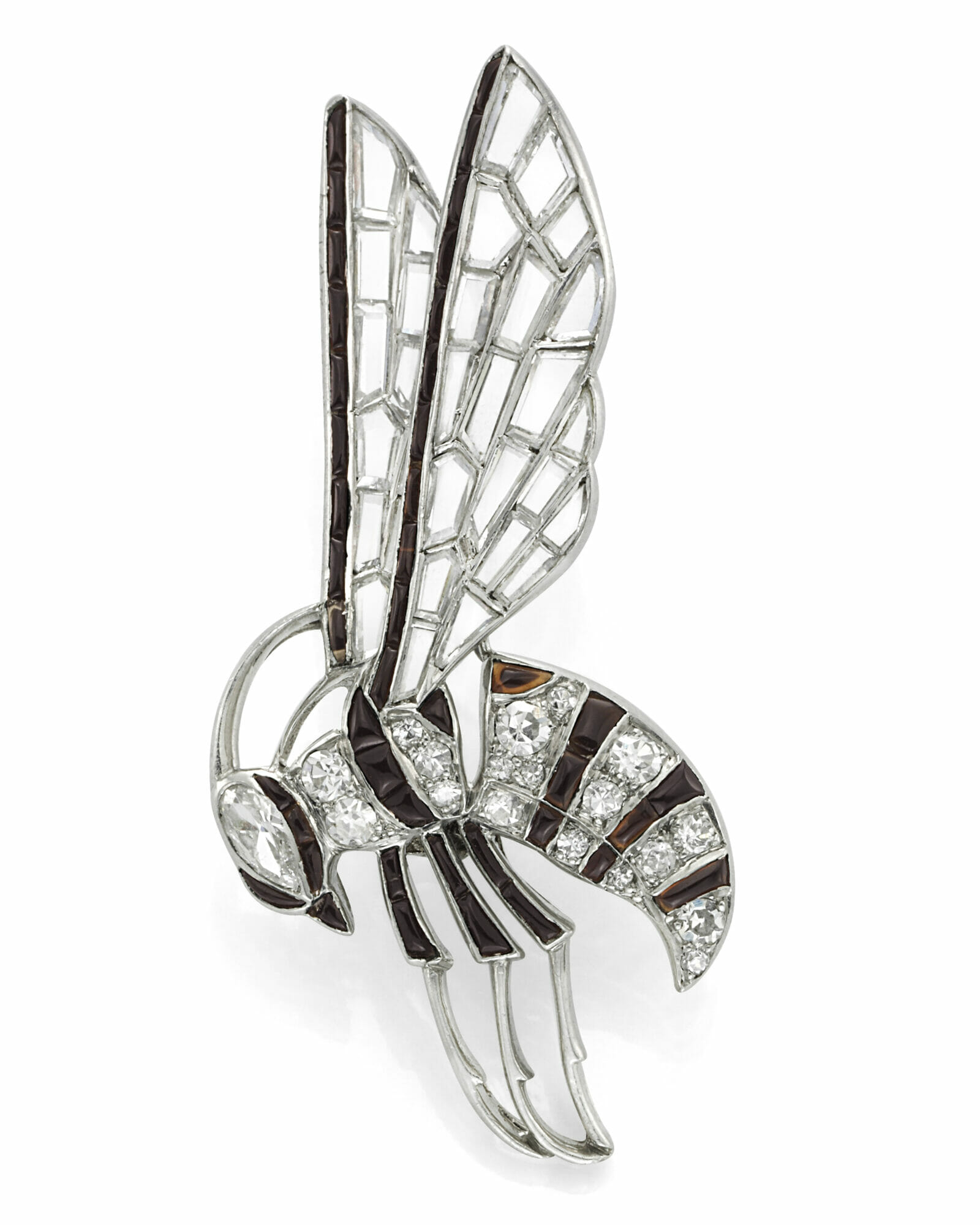
Van Cleef & Arpels Diamond and Onyx Wasp Brooch, 1926
This brooch shows how Van Cleef & Arpels masterfully and realistically recreated a wasp in diamonds. The most eye-catching detail is the wings, which are assembled out of an array of custom cut table-shape diamonds. The flat gem ingeniously suggests the transparent veined wings of a wasp.
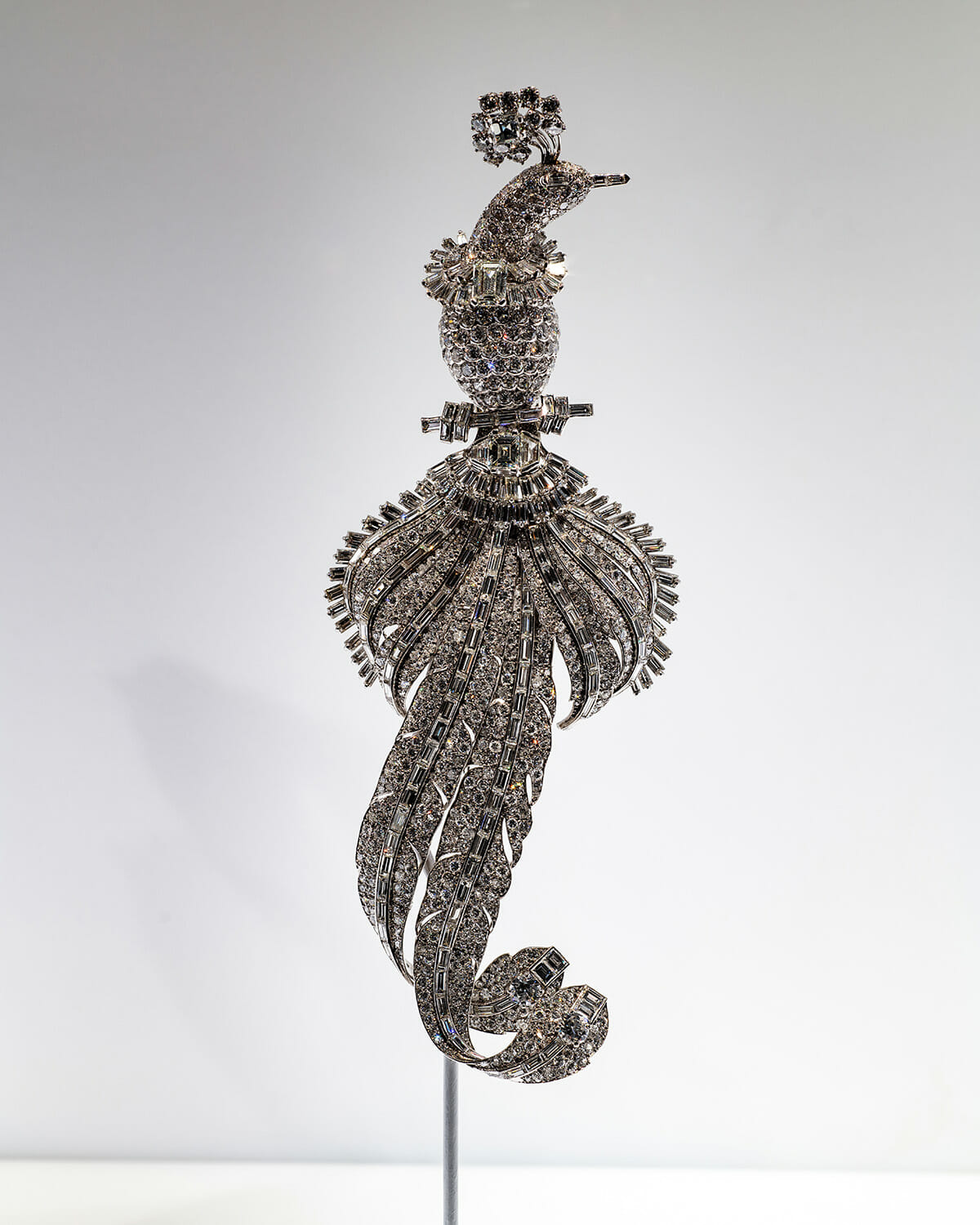
Cartier Diamond Bird, 1948
This gargantuan bird brooch was made under the supervision of Cartier’s legendary Creative Director, Jeanne Toussaint. The special-commission jewel measures almost eight inches high and weighs approximately 5.5 ounces. It has about 90 carats of diamonds in the platinum setting, the largest of which were provided by the client. The gentle S-form of the jewel gives the piece a sense of movement and lots of attitude. At the 2016 Met Gala, it was worn by Uma Thurman.
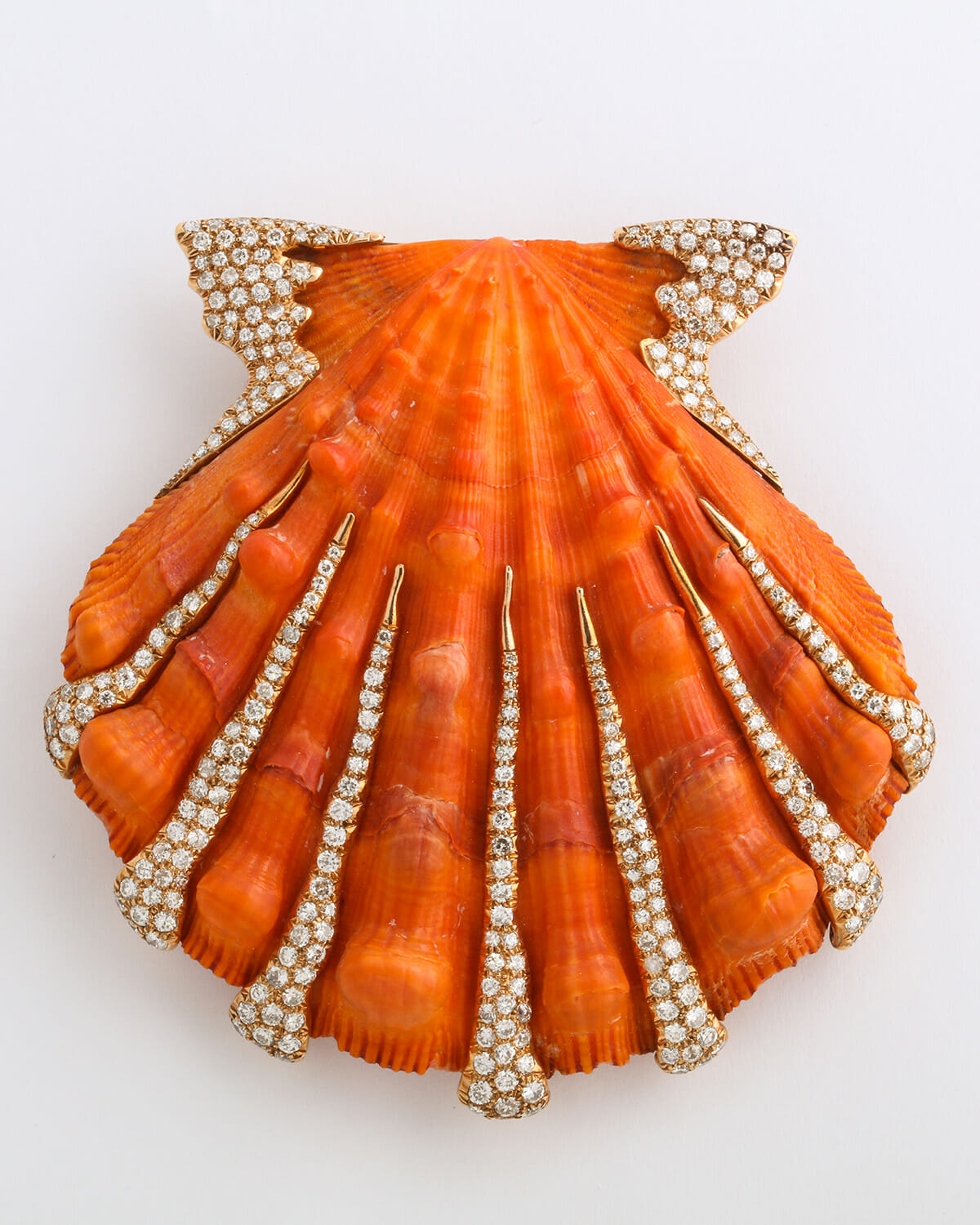
Verdura Lion’s Paw Shell Set with Diamonds and Gold, ca. 1940
Designer Fulco di Verdura bought the shell for this brooch at the American Museum of Natural History around 1940, took it across Central Park to his studio on Fifth Avenue and had it set with diamond and gold tendrils. The precious gems and metal give the appearance of water receding from the surface of the shell as it laid on the beach.
Only a few of these shells were ever created and several were owned by celebrated collectors who appreciated the unique style. The one in the Beautiful Creatures exhibit belonged to Standard Oil Heiress Millicent Rogers.
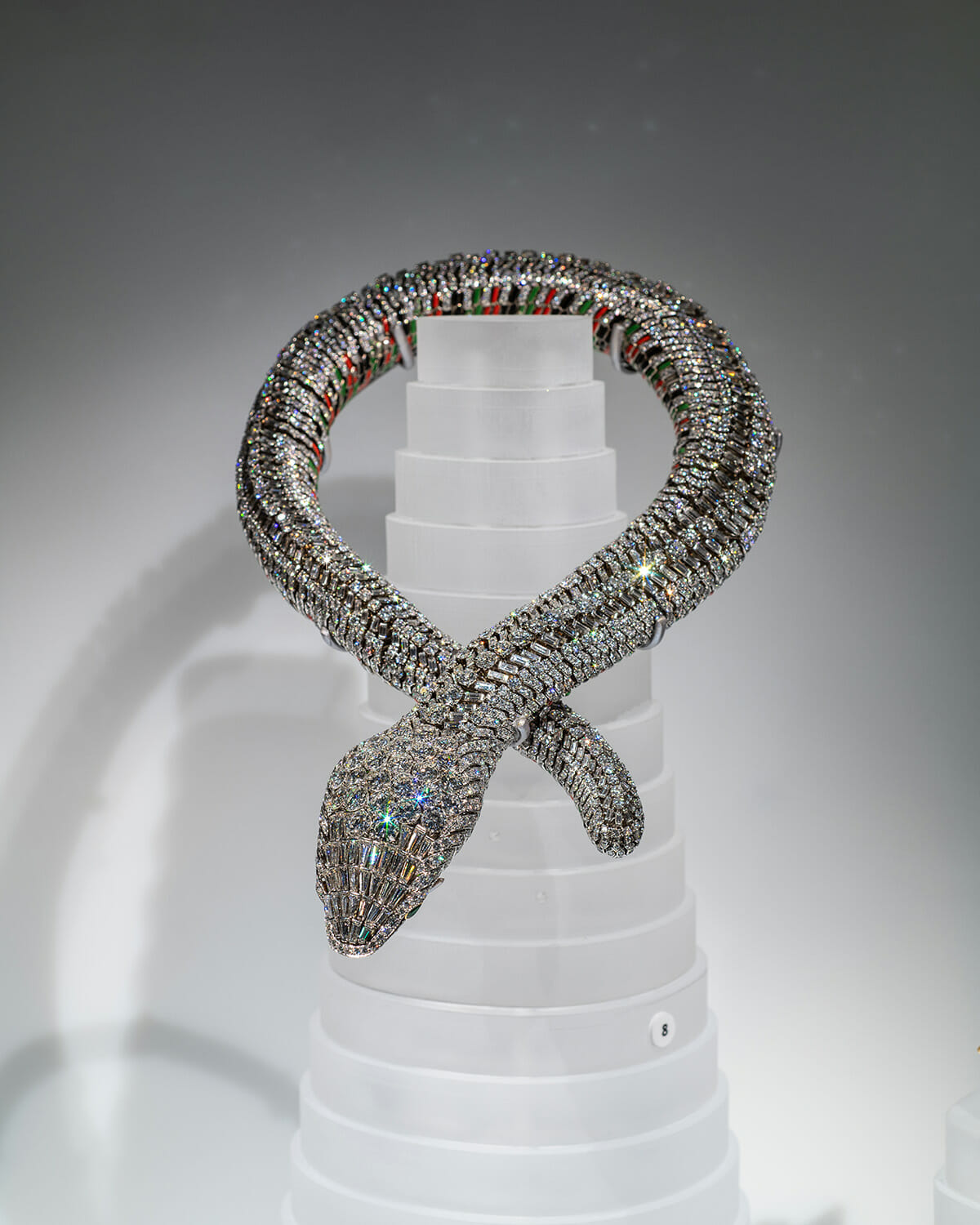
Cartier Paris Diamond Snake Necklace, 1968
Mexican actress María Felix clearly identified with snakes as a symbol of wisdom and strength. In fact, she was even nicknamed La Doña after playing the title role in the 1943 film Doña Bárbara, about a strong, independent woman. She collected snake themed jewels throughout her life. When she lived in Paris during the mid-1960s, she commissioned this large snake necklace from Cartier.
The design and manufacture of the 22-inch-long serpent took two years. A good portion of the time was most likely spent figuring out how to engineer the platinum and gold armature on the interior that makes the necklace fully flexible. Cartier’s master craftsmen also had to create a method for coving the snake’s sinuous body in diamonds; after all, there are 2,473 brilliant and baguette cut diamonds on the necklace, weighing a total of 178.21 carats.
The green, black and red enamel on the back interior of the design were a nod to the colors of the Mexican flag.
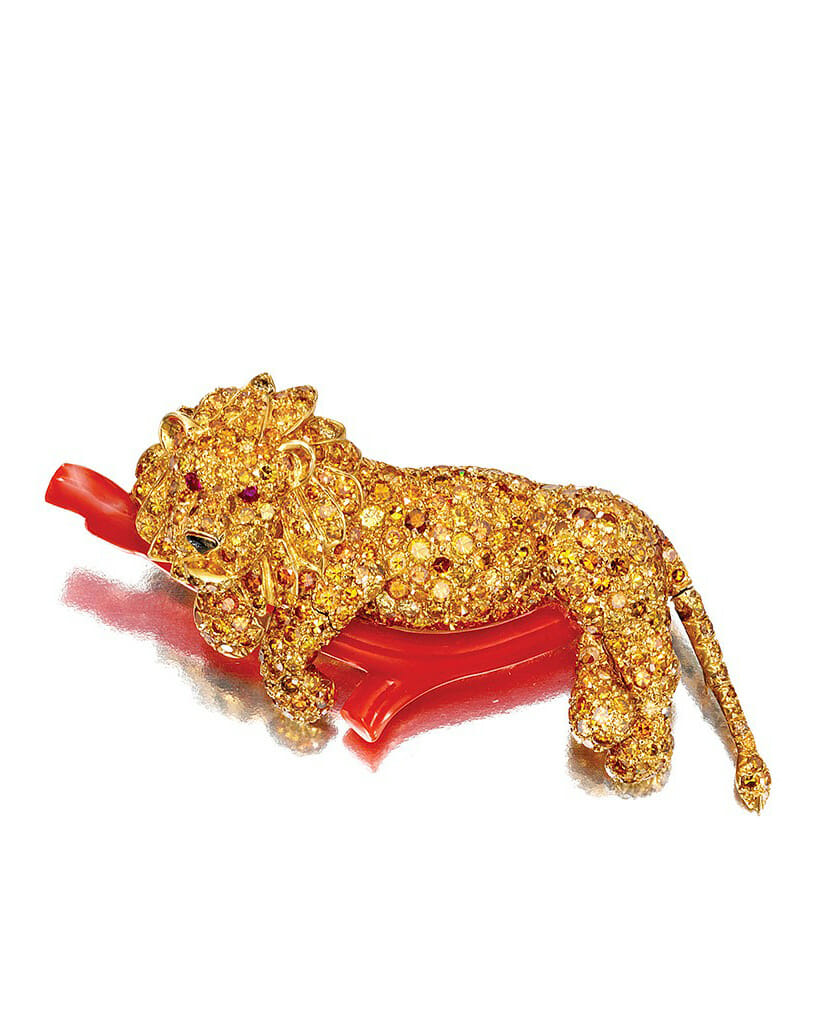
Van Cleef & Arpels Colored Diamond, Ruby, Enamel and Coral Lion Brooch, 1968
New York socialite and philanthropist Brooke Astor owned this glorious lion brooch made by Van Cleef & Arpels in 1968. The king of the jungle is covered in yellow diamonds in various shapes that create a sense of texture and depth on the fur.
The Astor’s family’s connection to the New York Public Library has led to conjecture that the brooch might be linked to the world-renowned marble lions in front of the main branch known as Patience and Fortitude. Throughout her life, Brooke Astor continued her family’s patronage of the institution.
